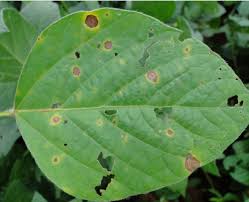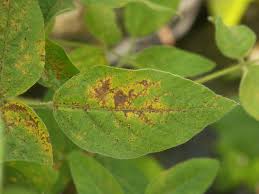Role Of Necrotrophic Mushrooms In Plants is very important.Two types of mycoparasitic interactions have been recognized and studied.In necrotrophic mycoparasitism, the parasite destroys the host cell and uses the nutrients of the host. Invasion is often initiated by winding parasite hyphae over pathogenic fungal hyphae or by direct penetration of hyphae. These mycoparasites are preferred for exploration in soil pathogen control.

The hyphae of these fungi release toxic substances into the plant that kill its cells, which are then colonized by the parasite. Thus, the parasite avoids the immune reactions that are inherent in all living cells, and the death of sections of the infected plant is ahead of their colonization of the parasite hyphae. The toxic products of these mushrooms can be of two types:
- 1) high molecular weight depolymerase enzymes that destroy the polysaccharides of which the cell wall is built. Above it was said that to provide osmotropic nutrition, mushrooms secrete active depolymerase. The cell wall of a plant is a rigid framework in which a cell is immersed. The destruction of part of the wall by parasite enzymes leads to the fact that, as a result of turgor pressure, ruptures of the membrane surrounding the protoplast, the plasma membrane, occur; through these gaps, the contents of the cell are poured into the extracellular space and become a substrate for feeding the parasite. Due to the high molecular weight enzymes do not migrate through the plant, but surround the hyphae of the fungus. They are “melee weapons”;
- 2) low molecular weight toxins ( vivotoxies), which, due to their low molecular weight, can migrate through the plant and, by killing its cells, create a springboard for advancing the parasite as a “ranged weapon”.
Role Of Necrotrophic Mushrooms In Plants
Symptoms of disease . which cause necrotrophic fungi, most often there is blackening ( necrosis ) and the death of a plant or its parts. Necrotrophs usually infect:
seedlings whose tissues have not yet had time to develop strong covers that protect against infection: the roots and the lower part of the stem (semipermalia knee) turn black (the diseases are called root rot and “black leg”), there is often a massive loss of seedlings;
– branches of woody plants damaged by frost: frost cracks and branches killed by frost are colonized by fungi, again due to the loss of immunity by dead cells; these fungi secrete toxins into the tissue surrounding them, leading to cell death and extending the area of infection;
vessels of the conduction system (trachea) – xylem: this disrupts the transport of water and elements of soil nutrition, therefore, the infected plants wither even when grown in fairly moist soil; the disease is called wilt or tracheomycosis;
– storage organs and fruits – tubers, roots, bulbs, real and false fruits; their cells are rich in water and nutrients, they often weaken immune reactions, so parasites feel comfortable in their tissues and often cause the decay of infected tissues (rot).
The nutrition of dead plant tissues has developed two properties in necrotrophic fungi that are important for developing systems for protecting plants against them:
- 1) promiscuity in the choice of a host plant ( broad phylogenetic specialization), due to which one species of fungus can infect many plant species belonging to different botanical families;
- 2) the ability after the death of the feeding plant to return to the soil and feed on dead plant debris there.
